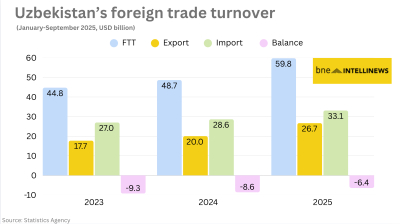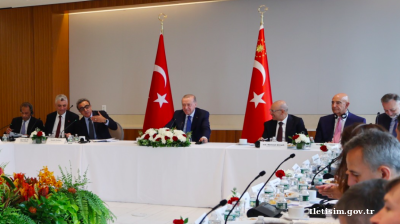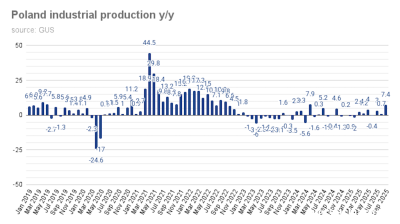Wages in Russian industry recover to pre-recession top levels. June saw strong salary dynamics with modest retail trade growth.
According to Rosstat data, July’s retail trade was slightly weaker than June’s, growing by 1.0% y/y (1.2% y/y in June), which was in line with the consensus (1.0% y/y) forecast and below our 1.3% y/y expectation.
Russia saw significant growth in nominal salaries (8.6% y/y in July) and the upwardly revised June data – the initial nominal salary growth of 7.4% y/y was upgraded to 8.4% y/y.
Real salaries also demonstrated significant growth at 4.6% y/y in July vs. 2-3% y/y growth in 1H17.
However, the strong salary growth has not fed through into a corresponding rise in retail turnover, which only increased by 1% vs 1.1% in June. Still, retail turnover has been negative for most of the last two years.
Between 2014 and mid-2016, wages in Russian industry declined relative to many countries on the ruble's sharp devaluation. In the manufacturing sector, the average monthly wage relative to European countries was so far at its highest in 2013–14, when it was about €650 (gross wage before income taxes). By summer 2016, the Russian wage had fallen by about a third to around €450, Bank of Finland Institute for Economies in Transition (BOFIT) said in its weekly update.
“More recently, Russian manufacturing wages have come back strongly, recovering close to their 2013–14 levels. In nominal terms, ruble wages continued to rise at around 8 % a year even in the recession years of 2015–16. In the first five months of 2017, they were further up about 9% y/y. Adding to the increase, the ruble has appreciated rapidly since early 2016, roughly 30% against the euro,” Bofit said in a note.
Russian manufacturing wages this spring exceeded €600 a month, putting them again broadly on par or slightly above average manufacturing wages in the lowest-income EU countries. Even with the recovery, Russian manufacturing wages are still lower than in the other of the eleven countries in Central and Eastern Europe (including the Baltic countries) that have joined the EU since 2004. In 2016, the average monthly manufacturing wage was about €620 in China and about €560 in Brazil.
Data

Uzbekistan’s nine-month foreign trade nears $60bn
Export growth of 33% and import expansion of 16% y/y produce $6.4bn deficit.

Hungary’s central bank leaves rates unchanged
National Bank of Hungary expects inflation to fall back into the tolerance band by early 2026, with the 3% target sustainably achievable in early 2027 under the current strict policy settings.

Germany slowdown weighs on Lithuania’s export-driven manufacturing sector
Lithuania’s economy remains highly sensitive to the industrial cycle in Germany, its third largest trade partner.

Chobani yoghurt king Hamdi Ulukaya becomes richest Turk
Knocks Murat Ulker into second place in Forbes ranking as his company's valuation leaps to $20bn.




